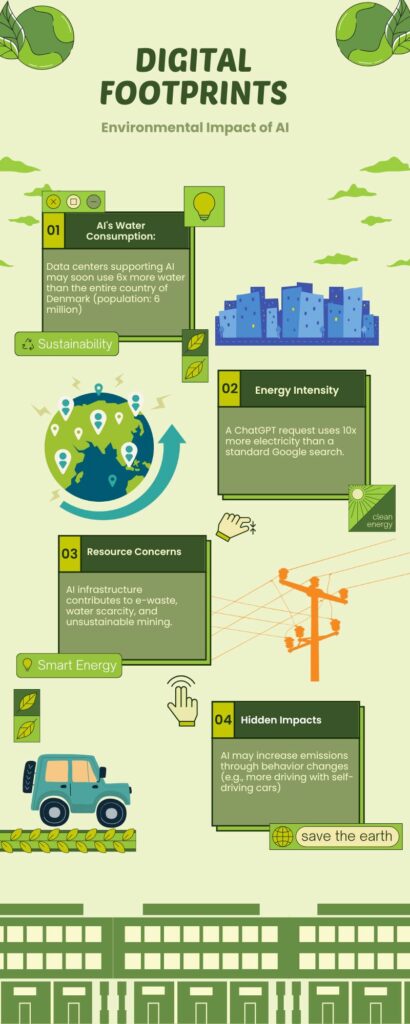Week Six
A single ChatGPT request uses 10 times as much electricity as a Google search, according to UNEP, underscoring the surprisingly high energy footprint of what appear to be straightforward AI interactions.
AI’s environmental costs go beyond energy use; they also include the manufacturing of electronic trash, the use of water to cool data centres, and the mining of rare earth elements, which are frequently done in ways that are detrimental to the environment.

Predicting AI’s overall environmental impact is difficult since it involves “higher-order effects,” such as the ability to spread misleading information about climate change or change behaviour patterns in ways that increase emissions.
The UN study and the speculative futures research both highlight the need to weigh the advantages of technology against its environmental consequences as educational institutions quickly use AI technologies.
I consider the concept that “technological innovation has the potential to result in or require epistemological and ontological innovation” important. As the essay “Speculative Futures on ChatGPT and Generative Artificial Intelligence (AI): A Collective Reflection from the Educational Landscape” points out, tackling AI’s environmental effect may need completely different viewpoints on sustainability and technology.
AI has an environmental problem. Here’s what the world can do about that.